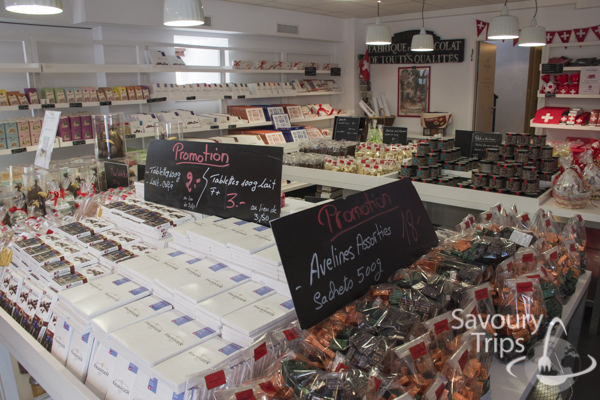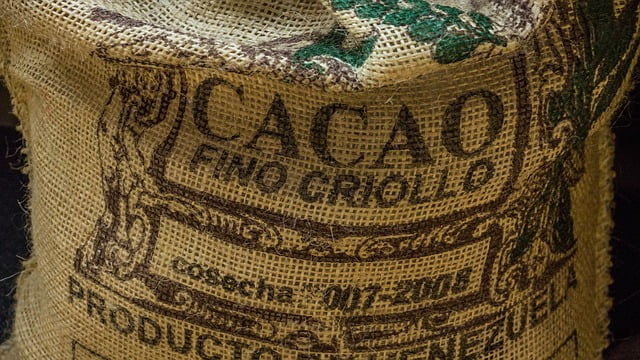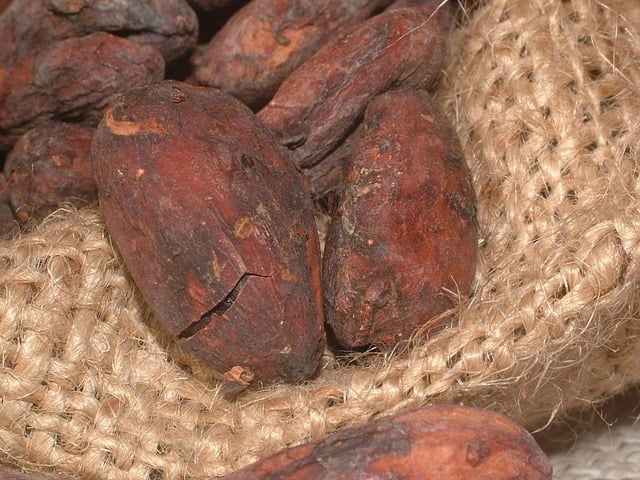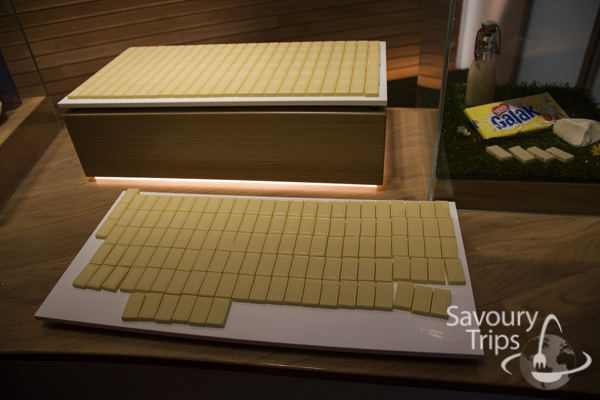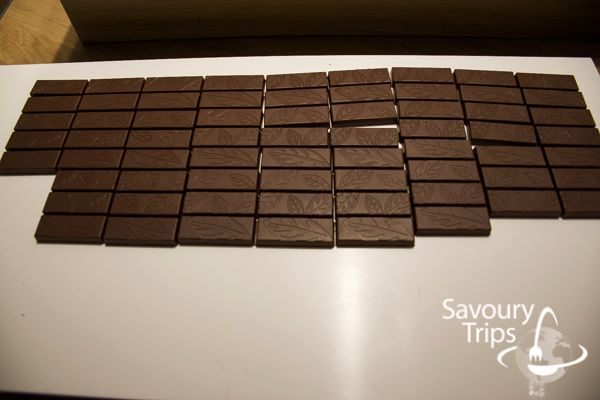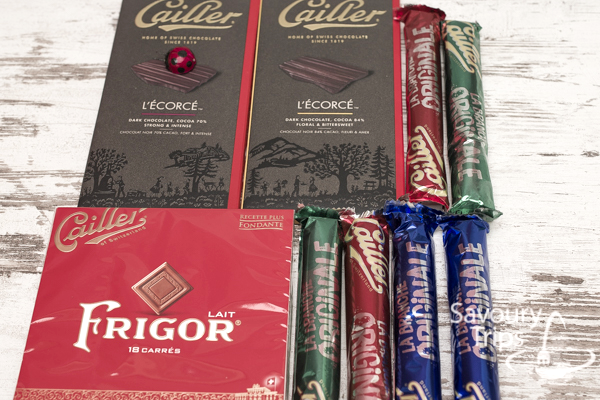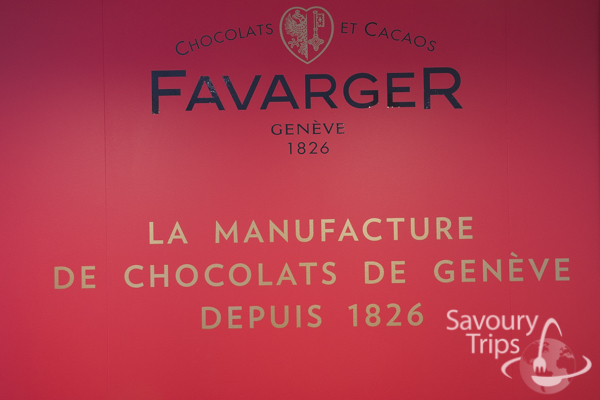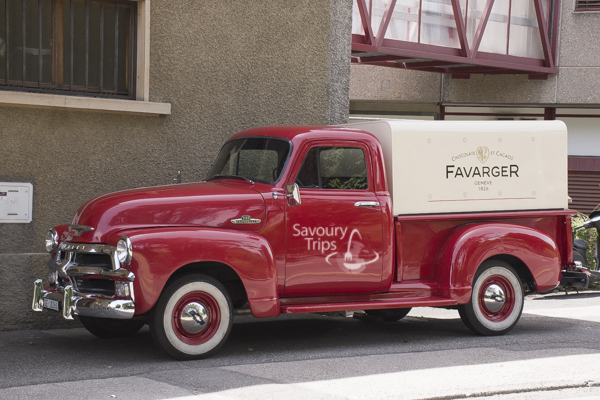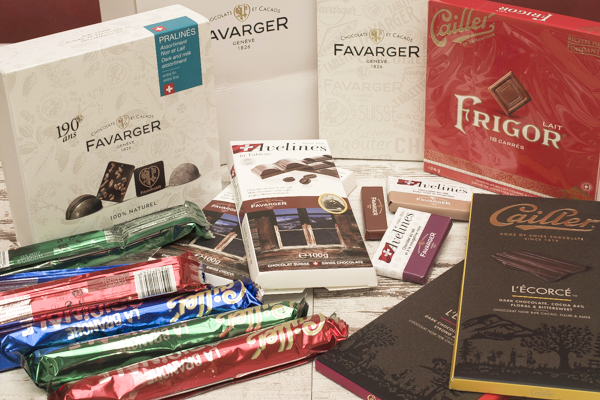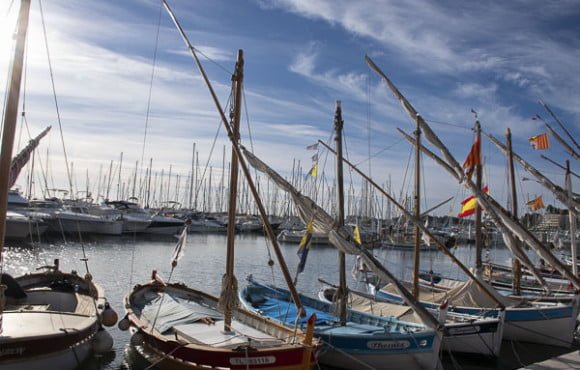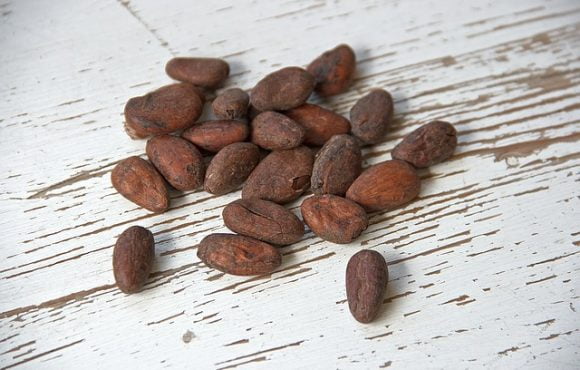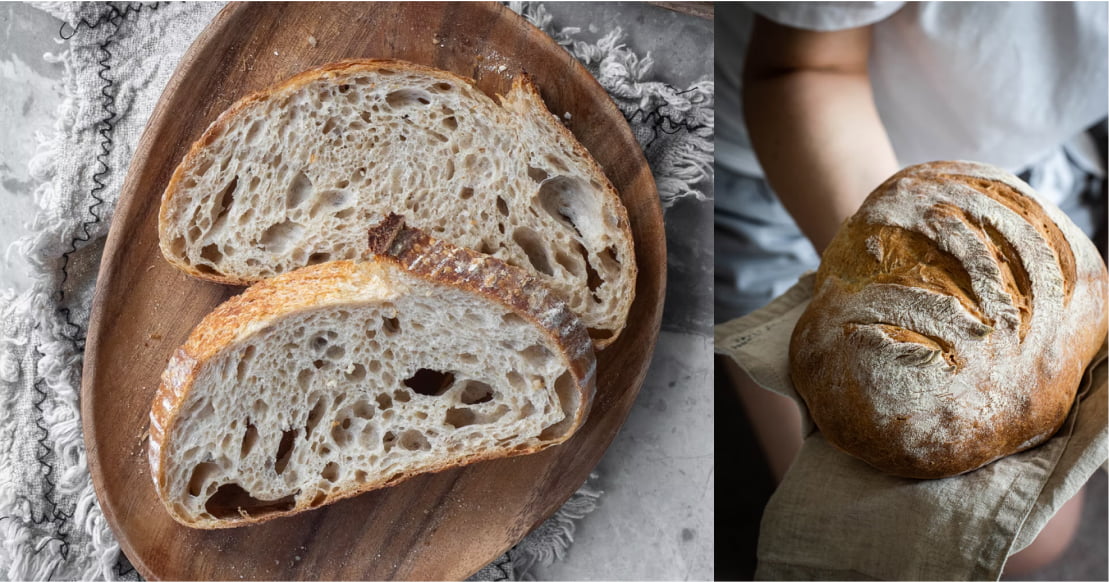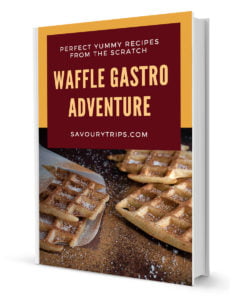Chocolate, how is made from beginning?

Chocolate as association
The holidays are approaching, and a great number of us will stick their noses in their pots and make something sweet for the New Year’s feast. It’s time to waken the hedonism both in our heads and stomachs.
Yes, and that is the way to go… well, why on Earth did we then spend the rest of the year on diet…
The favorite candy among the candy are most frequently made of chocolate.
Once, we’ve started the story of why it was good both for kids, and for school here.
Soko Stark
I don’t know what was your case, but at my school age, it was very popular to take school children to Soko Stark, to which we, of course, were looking forward.
Also, I remember very well, just how the adults would scare us that we couldn’t carry anything outside, but that, after all, we could taste something there.
As if we, the kids, could eat a lot at that age, or, God forbid, take it home.
I was so terrified, that I didn’t even take the chocolate banana bar, and I still remember it very well… them rolling down that assembly line, all chocolate… and then the ‘Najlepse zelje’ chocolate bar… all I have left of its taste now is nostalgia.
When I look back now… I feel sooo sad because I wasn’t bolder and enjoyed all that more.
And now, here where I’m taking you this time, you could eat till you die and bring home as much as… well, as you could afford.
This is one trip to the chocolate country.
Nestlé and Favarger
Let’s go to Switzerland again, to pay a visit to the two chocolate factories, and to see what it looks like there far away and why their chocolate is so tasty.
Nestle Factory (which bought off Cailler, the famous Swiss chocolate) is placed in the place called Broc, near Lausanne and Montreux, Gruyere region (there’s good cheese and milk there too, so it’s logical that the chocolate is delicious), and we mentioned how to get there, here, and also here.
Also, Favager, factory that is set in Geneva, and we mentioned how to get to it here.
But I should provide you with some information before the trip, we shouldn’t be uninformed.
Where has God sent it to us from, and a huge ‘thank you’ for that.
This magical flavor dates back to the 7th century, when the coco tree Theobroma coco was grown by Mayas in the Central America. Then, after Christopher Columbus discovered America, he brought the coco grain back to Spain in 1502, so that mister Hernan Cortes who conquered Mexico (an Aztec country at the time) in the name of Spain, finally god an idea what to do with the grain.
Aztec emperor Montezuma showed Hernan Cortes how they consumed the coco grains, in the form of xocotlatl, the ancestor of chocolate, and we wrote about it here.
A beverage made of the ground cooked coco grains and cold water. It was very bitter. With the addition of honey, vanilla extract and different hot spices, that bitter taste would turn into something completely different, something that nowadays most of us cannot imagine spending a day without.
Then, luckily, due to the Danish in the end of 17th century, the first hot chocolate was made.
Eventually, with the help of our common creativity, these chocolate cookies were created:
- Chocolate and peanut butter cake
- Figs in chocolate
- Chocolate tart
- Chocolate cheese
- Dobosh
- Chocolate munchmallow
- Chocolate brownies with ice cream
- Chocolate waffles
Kinds of chocolate used in cookery
- Unsweetened– without sugar, vanilla, lecithin. It is very bitter, and is usually used as an additional ingredient to a recipe, or for decoration.
- Bittersweet– contains sugar, lecithin or vanilla, it has more chocolate liqueur, and has, therefore, a strong flavor.
- Semisweet chocolate has the same ingredients as bittersweet, except that it contains less chocolate liqueur, so it doesn’t have such a strong flavor, and it contains a bit more sugar.
- White chocolate doesn’t contain chocolate syrup, but has sugar, coco butter, solid ingredients, lecithin and vanilla.
- Chocolate chips, or chocolate sprinkles aren’t recommended to be melted, because they are too thick when melted.
- Coco as chocolate liqueur which doesn’t contain a lot of butter, and as a result of that it occurs in a solid matter, i.e. coco powder.
3 top combinations of flavors
With wine– dark chocolate and wine at first seem incompatible, because both wine and dark chocolate have strong aroma. Here, the combinations are made by the principle sweet with sweeter, so sweeter dark chocolate is a great combination with dessert wines.
Coffee– yum, after a long day, when I wish to sit and take a break… I dream of this combination… black coffee (I vote for espresso) and dark chocolate. A sip of hot black coffee with a piece of chocolate immediately melting in mouth… mmm…. Yum, yum, yum.
Salt– try chips and chocolate, bacon and chocolate… salt and sugar, the two ingredients our organisms always crave (Just how much salt do you put on tomato?), even the combination of eating them at the same time cannot be wrong (it positively affects the nervous receptors).
Facts about chocolate:
- 16 out of 20 top world countries that consume chocolate are in Europe.
- 66% of chocolate is consumed in between meals- here’s the answer to our overweight.
- 22% of gross chocolate consumption happens between 8 pm and midnight… absolute truth, I’ll have to remember this the next time I reach for cupboard door at 10 o’clock at night.
- The most chocolate is consumed during winter.
- Chocolate industry uses 40% of world almond and 20% of world peanut production.
- Men and women love eating chocolate, some don’t admit it… this time it’s men… only 87% of the questioned sample admitted to like chocolate, and 91% of women.
Chocolate myths
- Chocolate doesn’t cause acne, there’s no scientific proof of that… but kids, especially girls, can still be scared with that.
- There’s no correlation between obesity and chocolate consumption. In America, where obesity is highest, chocolate consumption is half of that in Switzerland. The Finnish consume 3.5 kilograms of chocolate per year, and they are known for a high level of those suffering from the coronary disease.
The dark side of chocolate
Slave society
It’s not all sunshine and rainbows in the story of chocolate. The greatest West African coco manufacturers (e.g. Ivory Coast) still allows slavery on coco plantations. What is worst is that the slaves are children. Although it is illegal, the law application is pretty restricted.
How does the world try to stop the slavery?
It most frequently tries to control the supply chain.
There’s a supply map and the roads of the good exhibited in the Nestle factory (Maison Cailler) in Broc.
In the video later in the article, you’ll see how much they take care about every part of the world and every manufacturer from which every single coco grain is imported.
How can chocolate affect health?
Excessive chocolate consumption can lead to obesity and diabetes. Stearin acid found in the chocolate can affect formation of blood clots in the organism.
Addictions
The addictions can be various… we are addicted to money, health, luck, cigarettes, Coca-Cola, and even to chocolate
Chocolate has an effect on parts of brain responsible for creating addictions. Not much is known about this yet, but you should take care of it all the same.
Top 5 countries that consume the most chocolate
- Switzerland, 10.14 kilograms per person per year
- Austria, 10.03 kilograms per year
- Ireland, 8.83 kilograms per year
- Germany, 8.18 kilograms per year
- Norway 8.13 kilograms per year
How is chocolate made?
- Coco grows in fruit (pods) the size of the football, filled with beans (or at least it looks like it to me). Fruit is green first, and then they become yellow, or orange-yellow as they ripen.
- Coco lands are harvested by hand, with machetes, and pods are collected.
- Fermentation follows after that, when the little beans from the pods are put in shallow dishes like plates, and covered with banana leaves. Plantation workers come from time to time and turn the beans over so that each one of them would ferment equally.
- After the fermentation, and before delivery to the manufacturers, the seed has to dry. The drying process most commonly takes place in sun and lasts for approximately 8 days.
5. Transport to the manufacturers
6. When it comes to processing in the chocolate production process, the pods are removed and coco is baked. Some of the processing stages differ for every kind of coco tree, but it is basically the same.
7. Afterwards, there’s grinding and it’s turned into the coco mixture. When heated, that mixture becomes coco liqueur, as a mixture of coco butter and sugar.
8. Once the coco butter and spices are added to the mixture again after that, different flavors can be created.
Nestlé Cailler Chocolate factory
The most famous chocolate Frigor.
We enter the grand door of the great Nestle chocolate factory.
This is a trip for everyone, the whole family, and the kids are going to be especially happy and satisfied.
I bought a ticket for 12.5 CHF, which is the same amount in euros.
After I got my headphones, I started my way through the hallways, which were filled with photos of their products and some historical text at first, and I read them from the walls.
Then, one big door opened and the performance began.
The story started with wood and ended with the final product, it told about how it was once, how it is now, and it ended with the workshop and tasting.
Tasting
God, just when I remember the amount of chocolate I ate that day… I think I didn’t eat so much throughout the entire previous year.
You know the feeling, you go around the served plates, and take one, then you go to the other plate and take another one… and over and over again… and then, after some time, you start turning round and check if somebody was looking at you, so that you can take the ninth and then the tenth piece… but it doesn’t end there… you start going in circles, pretending to be taking pictures… and take one or two more pieces… then I end up reading all the texts written on the walls, and take pieces with both my left and right hands… and suddenly, I feel sick.
So, on that day, I had chocolate for lunch, but also for breakfast and dinner.
You can see by the plates how it all went.
There is a lot of chocolate here.
And then here as well… I’m not over the embarrassment yet.
White chocolate, not so interesting to me.
Casting a look on the side, it is noticeable that someone’s already been digging in the middle 🙂 .
And a little more here.
After I got here 🙂 , not much was left… The picture is taken from close so that you wouldn’t see the size of the plate 🙂 .
I took vengeance for Soko Stark here.
Now, let’s go on with the tour… Since I was already sick from the amount of chocolate I’d eaten.
Interesting…
What was interesting, is that you could make a reservation for the chocolate workshop where you could learn about the chocolate manufacture, and its processing into chocolate desserts, such as, for example making gnash (we learned about it here), tempering and putting it in molds (we learned about that here). The ticket is just 12 CHF for adults.
Nice experience and spending time with the entire family.
A part of my catch.
Useful
Here are some useful links for paying a visit to this factory:
You can visit this factory by train to, and take a ride in the chocolate train
Favarger
Another factory, with tradition since 1826, which is set in the suburbs of Geneva, Versoix
WELCOME!
The production process is similar, so I won’t repeat myself.
What certainly caught my eye on our way to the factory was their delivery vehicle, a red Chevrolet.
Of course, I had to take a picture.
You can see it parked in front of the factory.
At the end of the manufacturing chain, this factory has its own shop
Some of the products could be bought as a gift and you can take them with you.
And for the further processing as well.
At the end of this trip, this was my catch, plus something else on the side.
I’ll leave you some other useful links telling you how to visit this factory:
The tour around the factory is about an hour and a half long, and it costs 25 CHF for adults, and 15 CHF for children (under 15), and the reservations are made via email: patrimoine@favarger.com
They also have a workshop which takes place for 2 hours and costs 75 CHF, and reservations are made on the same email.
The tasting lasts for 35-45 minutes, and is 15 CHF per person.
The pirate treasure….

